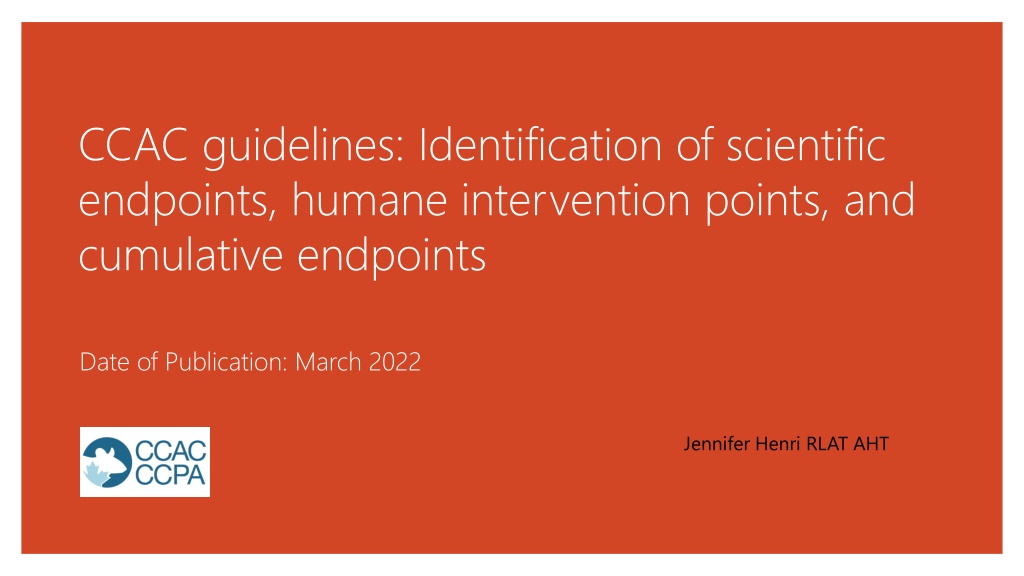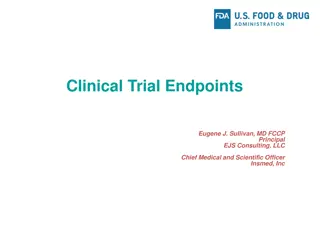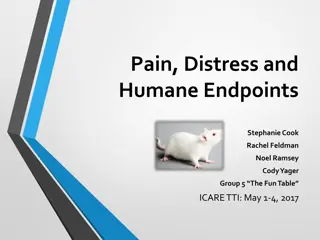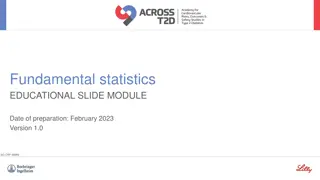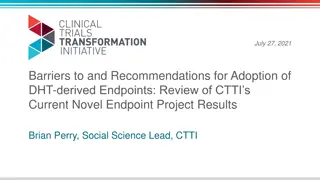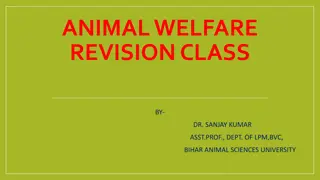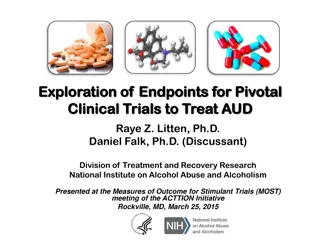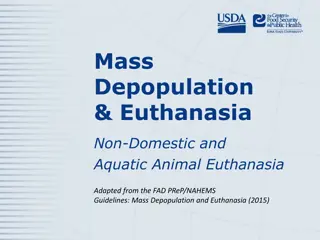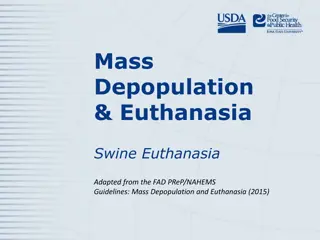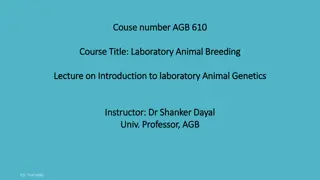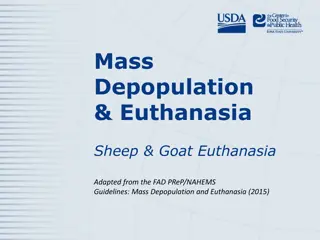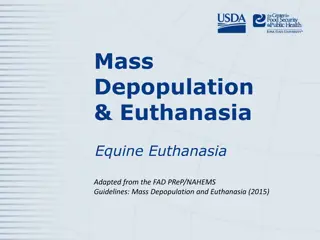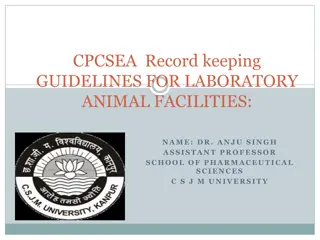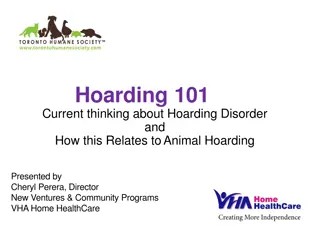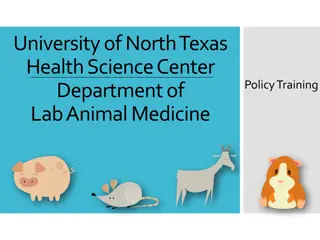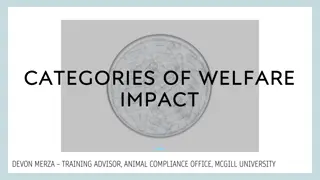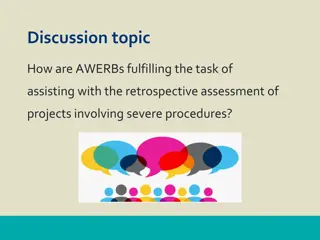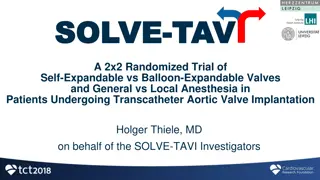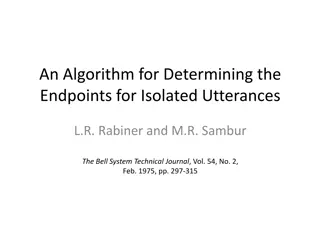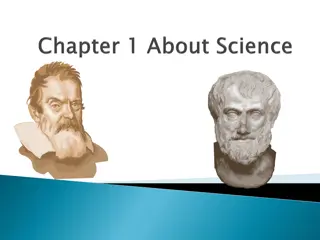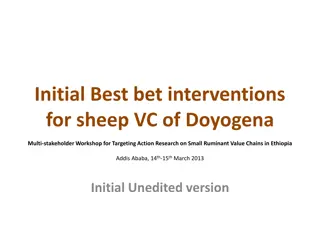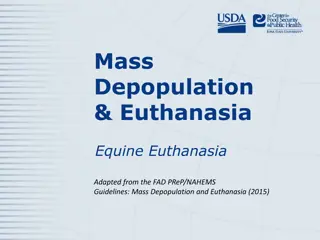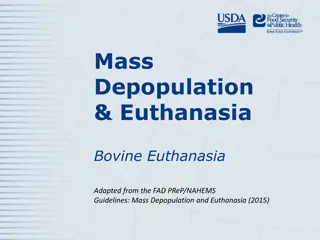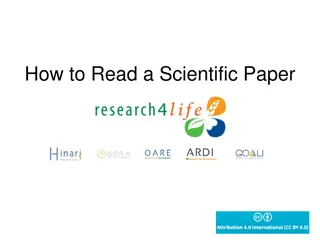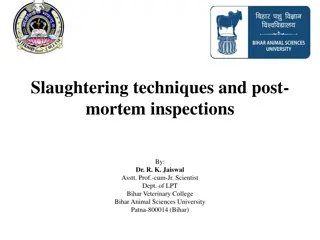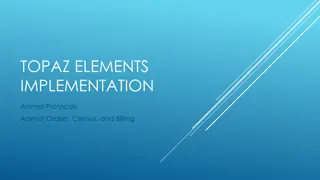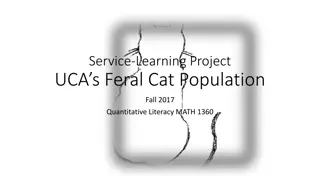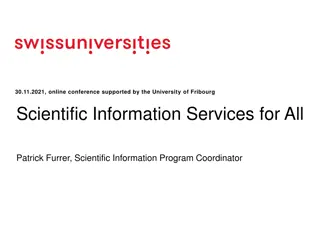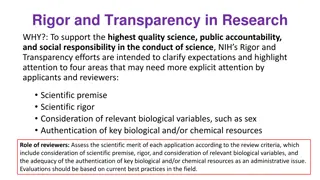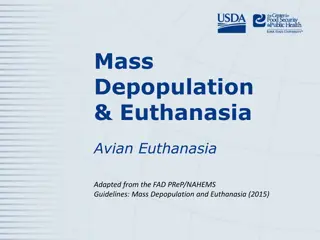Guidelines for Scientific Endpoints and Humane Interventions in Animal Research
These guidelines outline the identification of scientific endpoints, humane intervention points, and cumulative endpoints in animal research. They emphasize the need for protocols approved by animal care committees, consideration of welfare-appropriate endpoints, and adaptation of endpoints during the scientific activity based on unexpected outcomes.
Download Presentation

Please find below an Image/Link to download the presentation.
The content on the website is provided AS IS for your information and personal use only. It may not be sold, licensed, or shared on other websites without obtaining consent from the author. Download presentation by click this link. If you encounter any issues during the download, it is possible that the publisher has removed the file from their server.
E N D
Presentation Transcript
CCAC guidelines: Identification of scientific endpoints, humane intervention points, and cumulative endpoints Date of Publication: March 2022 Jennifer Henri RLAT AHT
LIST OF GUIDELINE STATEMENTS IN THIS DOCUMENT This guidelines document applies to all animals used for scientific purposes, including wildlife brought into laboratory animal facilities and third-party-owned animals that are used off-site (e.g., at commercial farms or shelters). Throughout this document, the term should is used to indicate an obligation, for which any exceptions must be justified to, and approved by, an animal care committee. The term must is used for mandatory requirements.
Definitions The term scientific endpoints describes the earliest points at which the stated objectives of the scientific activity will be reached (e.g., collection of data or biological materials over a predetermined time, achieving learning outcomes). 1 In contrast, the term humane intervention points describes criteria (i.e., observable health impacts, physiological changes, or behavioural signs) that when met, require an intervention to address negative welfare states. This term is used instead of humane endpoints to indicate that action is to be taken to protect animal welfare, but this action is not necessarily euthanasia. 2 2
Guideline 1 The scientific endpoints, humane intervention points, and monitoring regime must be described in a protocol and approved by an animal care committee before commencing any animal-based scientific activity. This information should be easily accessible to everyone working with the animals.
Guideline 2 When there is insufficient evidence to establish scientific endpoints prospectively, pilot studies must be conducted to identify the earliest point that the scientific activity can be terminated. Pilot studies must focus on determining welfare-appropriate endpoints, not on generating useable scientific data. The results of the pilot must be presented to the animal care committee before the protocol proceeds.
During the Scientific Activity Adapt Scientific Endpoints and Humane Intervention Points as Required in the Event of Unexpected Outcomes. In extreme cases, if the protocol author cannot be reached immediately, the veterinarian or their delegate, as the ultimate authority on animal welfare (see CCAC policy statement on: terms of reference for animal care committees), must apply the best intervention, based on their professional judgement.
Guideline 3 Animals must be monitored for the duration of the protocol. Interventions must be applied when animals reach a humane intervention point. To safeguard animal welfare, the chosen humane intervention points and scientific endpoints may need to be adjusted during a scientific activity; changes to these points should be incorporated as amendments to protocols.
Organize the Animal Monitoring Regime The initial monitoring frequency should be pre-set, with more frequent observations conducted whenever the welfare impact is expected to be high or when there is an increased risk of progressive decline (even if this requires after-hours monitoring). A scoring sheet (or checklist) is a useful tool to keep track of each animal s progress towards any humane intervention points or relevant scientific endpoints (e.g., Wolfe et al., 2018). Rigid scoring sheets may not capture all important information, so incorporating some flexibility, for example, through an open comment section, can be beneficial. Individuals responsible for animal monitoring must be trained to score in a consistent and accurate manner.
Guideline 4 A review of the effectiveness of the humane intervention points and scientific endpoints should occur when a scientific activity is completed. Any potential refinements should be included in future protocols (including renewals) and standard operating procedures (SOPs).
Cumulative Endpoints Cumulative endpoints are the points at which individual animals should be considered to have reached their lifetime maximum involvement in scientific activities. Guideline 5: Cumulative endpoints must be considered for all animals held long-term and for animals that have multiple scientific experiences. These animal must have a lifetime experience record. Physical impacts Psychological impacts
Cumulative endpoints All previous welfare impacts must be considered when thinking about an animal s cumulative life- time experiences. To ensure that compromises to animal welfare do not exceed those approved by an animal care committee, those involved with the scientific activity and animal care have an ethical obligation to identify as early as possible animals that are no longer coping with life as a scientific subject (e.g., failure to groom, abnormal appearance, loss of appetite, stereotypic behaviour, exaggerated responses to routine procedures, continually fighting restraint).
Record Keeping Near the animals or electronically. Easy, quick access. Provides evidence- based decision- making. Cumulative endpoint decisions. Information Storage Tool
Specific Factors Species Rearing environment and weaning age Number and frequency of procedures Physical and chemical characteristics, route, volume and frequency of substances administered Negative experiences Each institution should create cumulative endpoint SOPs Interval between procedures (return to baseline) Body weight and condition Habituation and/or positive reinforcement training Changes in social structure Behavioral and physiological indicators of stress and pain Interventions to relive welfare impacts
Guideline 6 In certain types of studies (e.g., longevity studies), cumulative endpoints must inform the scientific endpoints as there is the potential for the cumulative endpoints to be reached before a desired scientific endpoint.
More questions about Cumulative Endpoints? Examples are available Guideline 6 In certain types of studies (e.g., longevity studies), cumulative endpoints must inform the scientific endpoints as there is the potential for the cumulative endpoints to be reached before a desired scientific endpoint. Breeding Animals Teaching and Training Aging and Longevity Studies CCAC_guidelines_scientific_endpoints
